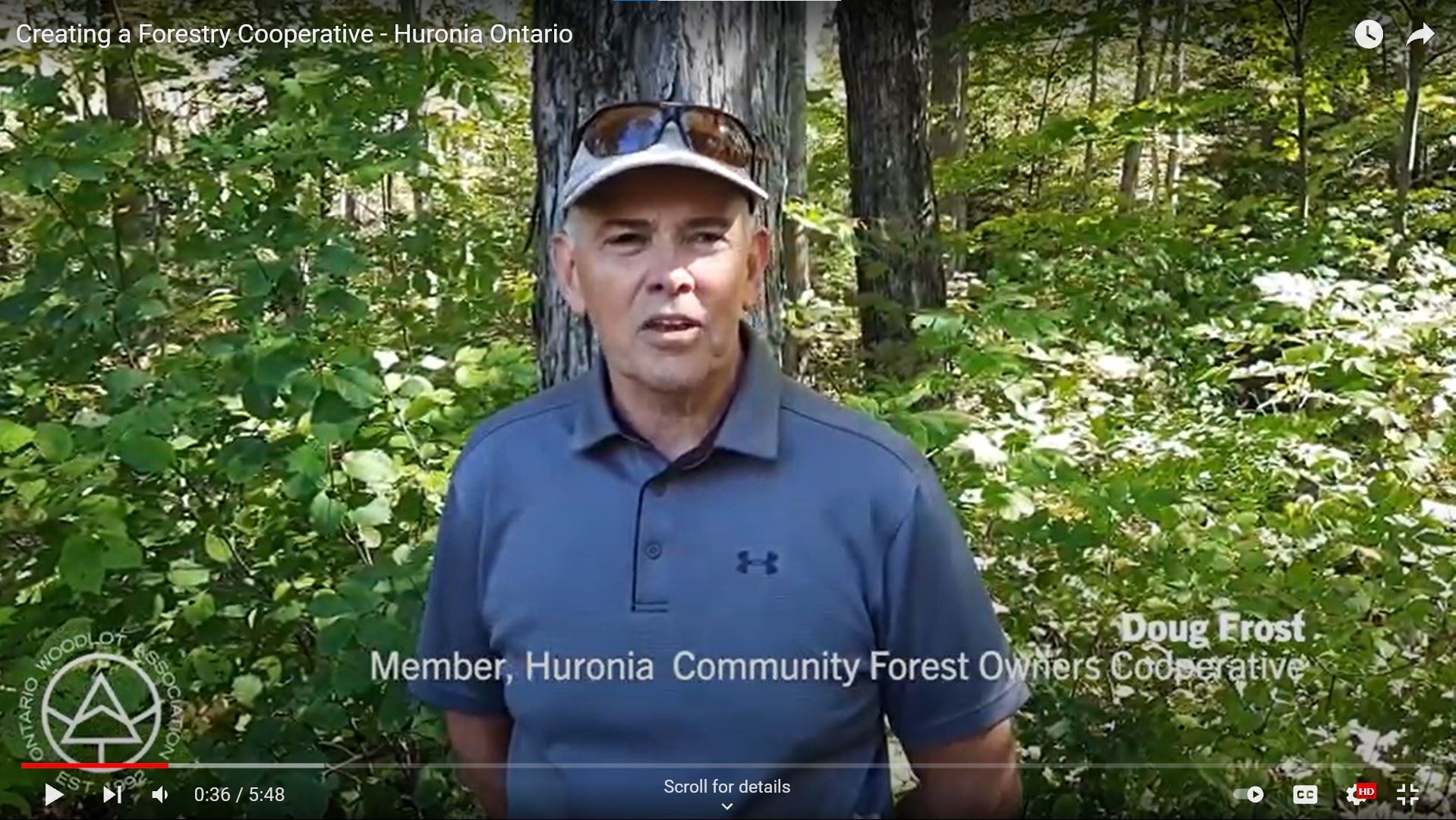- Home
- Get Involved
- Programs
- Forest Owners' Co-op Pilots
Forest Owners' Co-op Pilots |
The OWA has launched two Forest Owners' Cooperative Pilot projects in the regions of Huronia and Kawartha Lakes. The pilot project aims to provide an affordable means for landowners to take care of their forests, so they evolve into more biodiverse systems that all can enjoy.
What are the goals of these cooperatives?
- Prevent their plantations from collapsing
- Reduce the expense of working with professional foresters and biologists by working collectively
- Generate a modest profit from sustainable harvested wood (focus on overcrowded, dead or diseased trees)
- Increase carbon sequestration potential
- Transition their forests to more biodiverse native hardwood forests
- Explore alternative revenue sources collectively such as eco-tourism and explore other social benefits such as wildlife corridors and trails
Please contact info@ontariowoodlot.com or call 613 713 1525 to inquire about joining the existing Forest Owners' Cooperative Pilots. We hope to expand to other regions over time and as capacity allows.
Landowner's interested in joining the Kawartha Cooperative can contact Elliott Groen, Sustainable Forestry Coordinator at elliott.groen@ontariowoodlot.com.
Frequently Asked Questions [ez-toggle title="What is a plantation?"]A plantation is a planted forest that requires management to reach a healthy and natural state. In most cases they involve conifer species such as red and white pine, spruce or cedar planted close together to ensure proper growth and form from a young age.[/ez-toggle] [ez-toggle title="Why were plantations established?"]Plantation establishment started in the early 1900s to rehabilitate degraded sites from excess forest clearing. Plantations help prevent soil erosion, extreme flooding and low summer river flows. They create the conditions for natural forest habitat to be restored.[/ez-toggle] [ez-toggle title="Why do plantations need management?"]Usually around the third decade after establishment plantations become crowded and stressed. This makes trees more susceptible to wind and ice damage, insect infestation, and disease. Management reduces competition, improves tree health, increases species diversity and creates conditions for higher quality wood products. Without management plantations may collapse instead of fostering the development of natural biodiverse forests. Common management techniques include thinning and invasive species control. These help achieve the ultimate goal of restoring natural forest habitat.[/ez-toggle] [ez-toggle title="What is thinning?"]Thinning is the cutting down of trees to achieve the intended ecological outcomes of plantations. The first thinning is usually a row thinning to provide machine access and happens around 30 years after establishment. Subsequent thinnings generally happen on a 10-15 year cycle and selectively harvest trees to improve the quality, diversity and structure of the stand. Each thinning creates canopy gaps that allow for establishment and growth of native tree, shrub and herbaceous species. The final thinning can involve the removal of high value products such as hydro poles. Scattered conifers are retained for diversity and as super canopy trees which are ecologically important for several reasons including providing nest trees for raptors.[/ez-toggle] [ez-toggle title="How are forest values protected during thinning?"]Good forestry practices are followed which include protecting riparian zones, wetlands, nesting and denning sites and other special features identified prior to thinning with appropriately sized buffers. Forest values are also improved during thinning by creating some coarse woody debris for wildlife such as salamanders and improving the structural and species diversity of plantations.[/ez-toggle] Resources Extension notes and other resources can be found in the OWA Magazine and Library section. Good resources to start with include:
EOMF’s Conifer Plantation Management Landowner Workshop Capstone projects from U of T Masters of Forest Conservation: Monitoring protocol for assessing plant diversity on small private woodlots under the OWA Forestry Cooperative Pilot Project Ningxin (Drossel) Ouyang joined the OWA as a summer intern in 2022. Drossel graduated from the University of British Columbia, and was enrolled in the Master of Forest Conservation (MCF) program at the University of Toronto during her internship. Drossel’s internship with the OWA included researching various methods for assessing vegetation biodiversity in woodlots before and after thinning treatments in our Forest Owners' Cooperative Pilots to help develop a baseline plant biodiversity monitoring protocol. Read more about Drossel's capstone project with the OWA. Analysis of the Forest Cooperative Pilot Projects Developed by the Ontario Woodlot Association Shan Shukla was an intern with the OWA in 2021. As a student with the Master of Forest Conservation (MCF) program at the University of Toronto, he joined the pilot project to objectively evaluate the success of the project. His involvement helped the OWA determine the cooperative projects were viable to continue. Read more about Shan's capstone project with the OWA. Forest Co-op's in the Media Canadian Forest Industries: Opinion: OWA’s forest owners co-operatives hold promise The Ontario Woodlander: A healthy landscape forever requires collaboration CTV News Barrie: Pilot Project works to improve health of forests |


